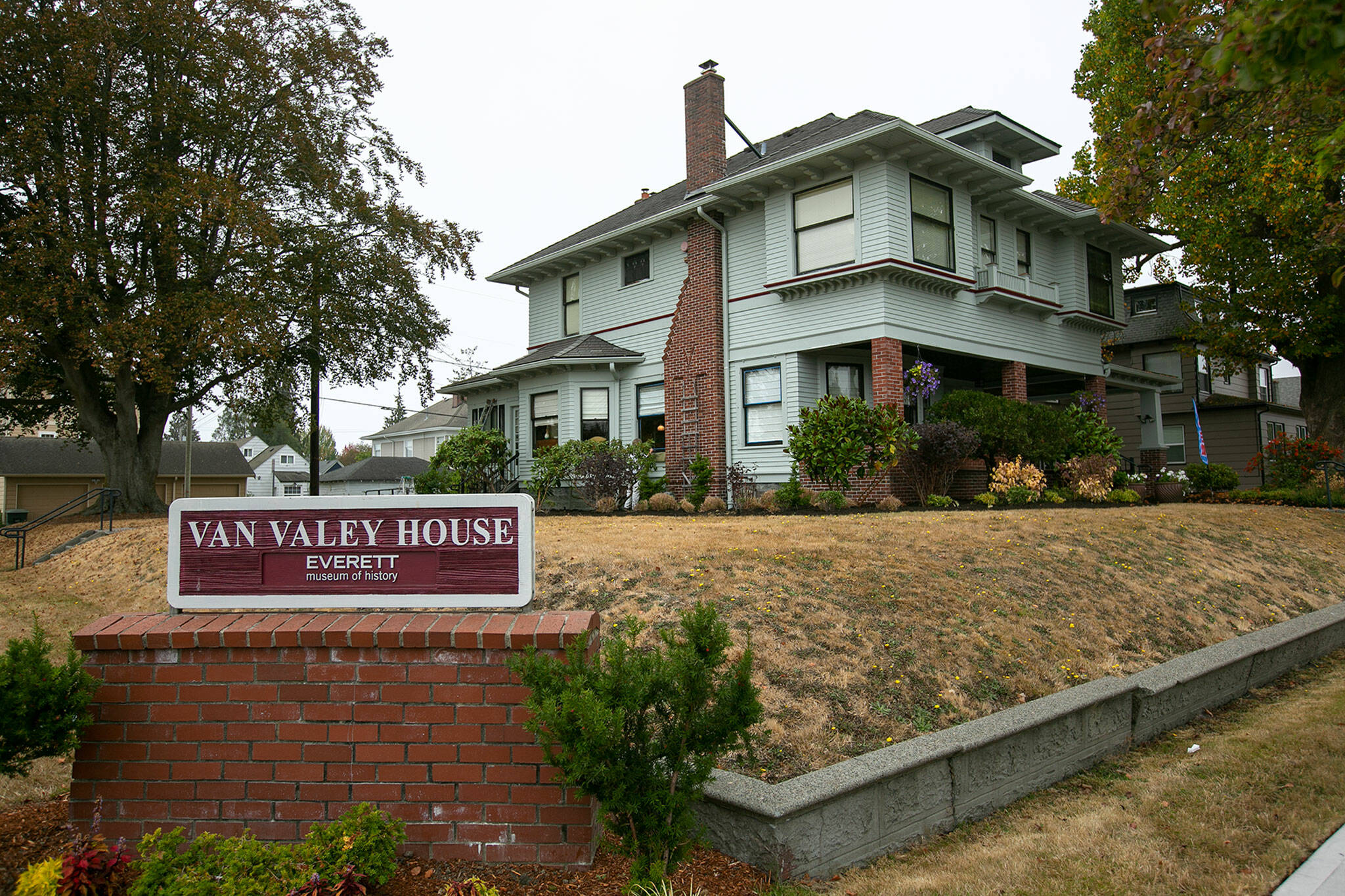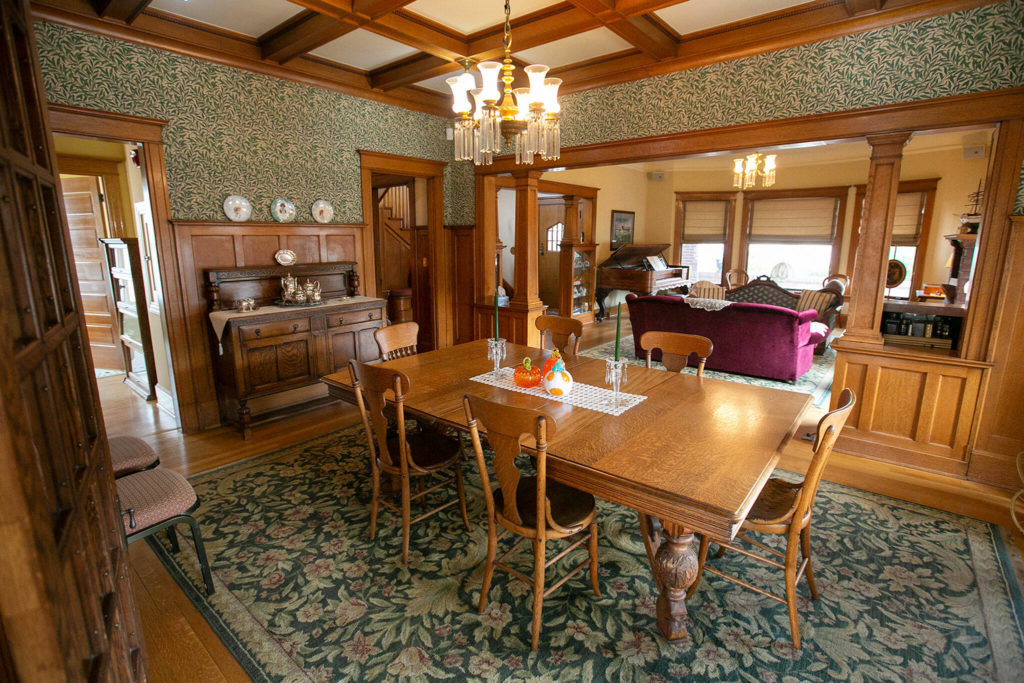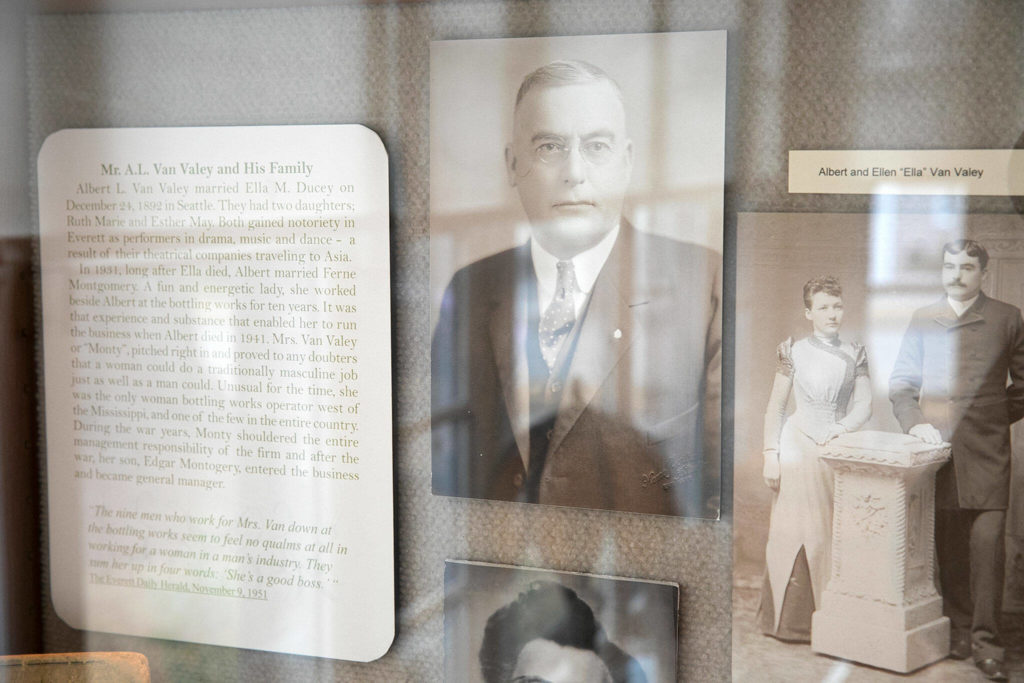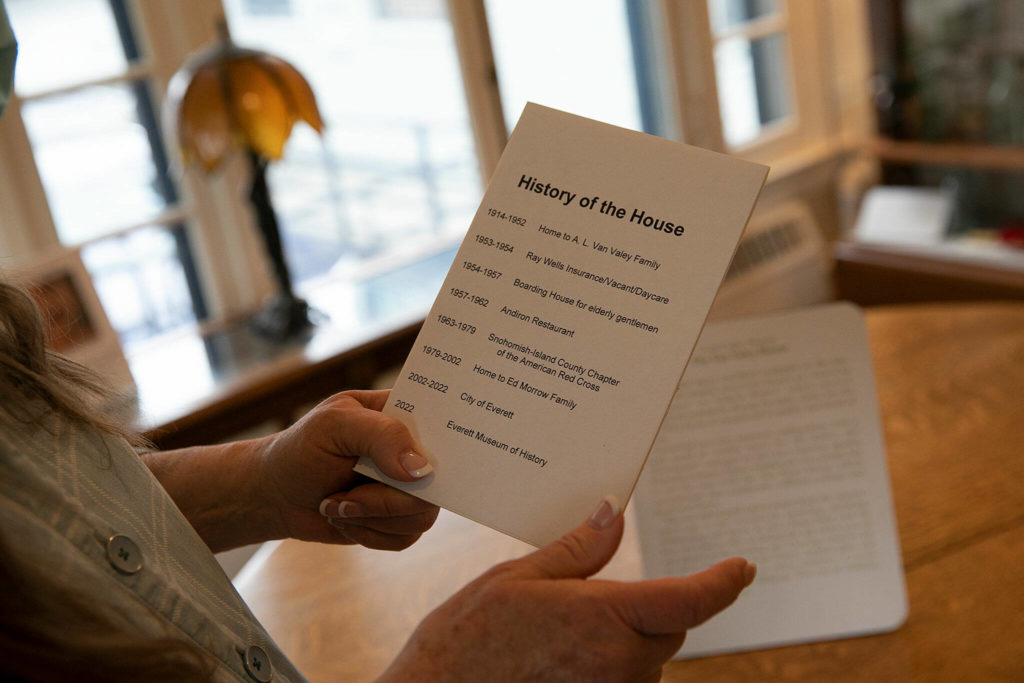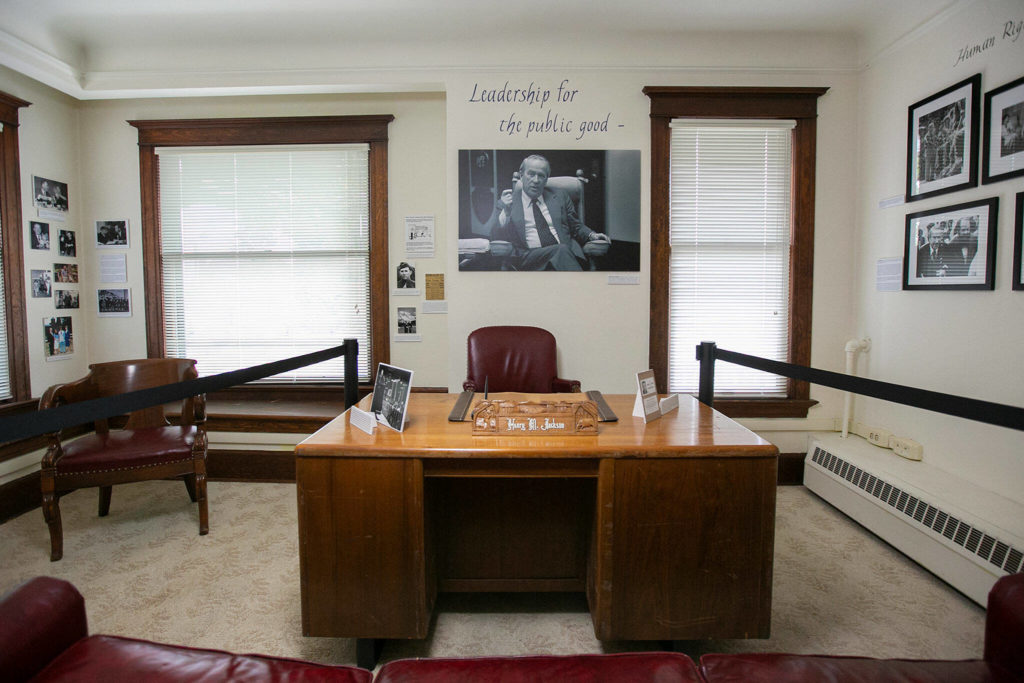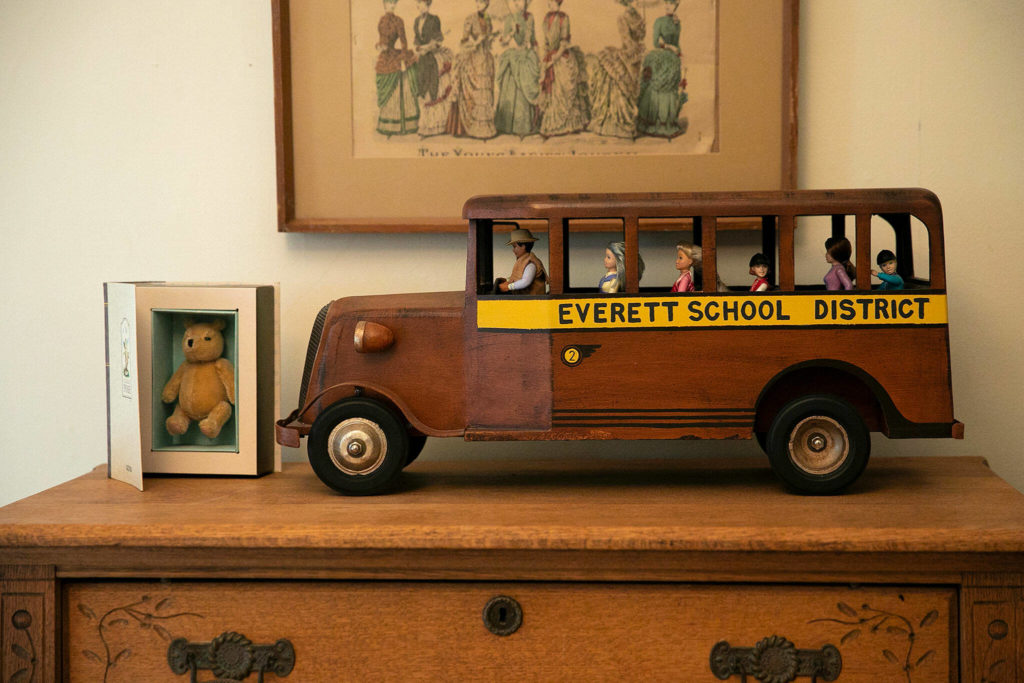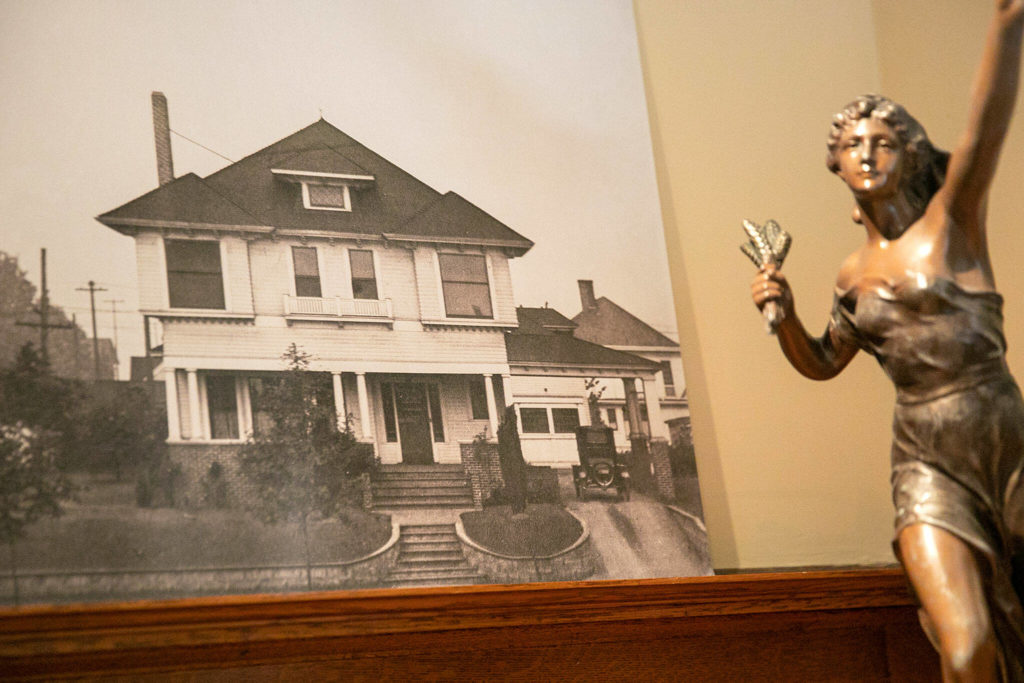EVERETT — The pale green home on 22nd Street and Colby Avenue has stories to tell.
Now, its tales can echo into the future as the Everett Museum of History opened the Van Valey House this week.
The Van Valey House, named for the family that had it built for $5,000 in 1914, was in the city of Everett’s possession from 2002 until earlier this year. After owning the nearly 2,700-square-foot home almost 20 years, the city gave it to the museum. The city had been using it primarily as a rental space.
Former owners Betty and Ed Morrow, who also had served on the museum’s board, put a clause in the deal when they gave it to the city in 2002 that the house go to historic preservation if Everett wasn’t using it. City leaders on the hunt for budget cuts were glad to give up the property, one of 150-plus city-owned sites, to the museum.
“Their hope was always that it could be a museum,” said museum executive director Barb George of the Morrows. “It’s a masterpiece. It has quarter-sawed wood in it, cedar and oak. It has a sculpture from France. Stained-glass windows from Belgium. It’s really something to see.”
Steps from Colby and a ramp from the driveway lead visitors onto the front porch of the American Foursquare home. Stained glass windows flank the wood door that opens into the foyer, with a staircase to the right and the living room to the left.
“It’s so visual right there on Colby,” said Jack O’Donnell, a local historian who attended the soft opening last week. “I just think that it’s paramount to preserve structures like that.”
Dark wood beams line the ceilings and walls. A lighter hardwood floor shows the century of use as a home, as a restaurant, as space for the American Red Cross, and as an event space for book clubs, concerts, meetings, weddings and more.
“The most impressive thing in the interior is all the natural woodwork,” O’Donnell said. “It’s just loaded with original wood.”
Two glass display cases frame the entry to the living room. This week they were filled with glass medicine vials, decades-old coin banks, teddy bears and blown glass pumpkins. Some of it, such as the pumpkins and teddy bears, is likely to be rotated out seasonally, which hopefully attracts return visits, George said.
The living room is decorated with couches and tables from the era. The centerpiece, however, is an 1848 Hallett, Davis and Co. square piano tucked near the window looking out on Colby Avenue. Five men were needed to move it in, George said. Despite its age and being a little out of tune, it’s still playable.
Twin six-bulb chandeliers light the living room and the adjacent dining room. The wood table and six matching chairs rest atop a green floral area rug, a piece from the Morrows’ time there. It complements the original hand-painted green floral wallpaper around the room.
Through those rooms, visitors can walk through the sunroom where displays explain and showcase the home’s occupants and uses over the past 110 years.
At the bottom of the staircase, a small statue of a woman in a dress doubles as a light. It’s a replica made from the cast of the original that now sits in the office and gift shop near the foyer.
One of the upstairs bedrooms serves as a monument to the late Sen. Henry M. Jackson, whom George called a “favorite son of Everett.” His daughter, Anna Marie Laurence, curated the space that includes the desk from his time as the Snohomish County prosecutor, posters of the congressional stalwart framed and hung from the walls and other artifacts.
“I consider him the last of the gentlemen politicians, the kind of people that used to be able to go and argue for the benefit of the country, then go out to lunch together or go play ball together,” George said. “I want young people to know it’s possible.”
The main bedroom has a wood bed frame used by the Van Valey family.
Another bedroom, which museum staff call Rachel’s room in honor of Betty Morrow’s mother, is set up like a child’s room in recognition of the Van Valeys’ two daughters.
Wood carvings by Ed Morrow are in both bedrooms and throughout the house.
The bathroom has its original tiling and built-in porcelain tub, as family patriarch A.L. Van Valey thought clawfoot tubs were old fashioned, museum trustee Joan Packard said.
The museum at 2130 Colby Ave., is open 11 a.m. to 4 p.m. Tuesday, Thursday and Saturday. But George said people can call (425-257-6300) and request a tour during other hours and days.
Some of the Morrows’ seasonal decorations, including an expansive Christmas set, are planned for display later.
Ben Watanabe: 425-339-3037; bwatanabe@heraldnet.com; Twitter: @benwatanabe.
Talk to us
> Give us your news tips.
> Send us a letter to the editor.
> More Herald contact information.
